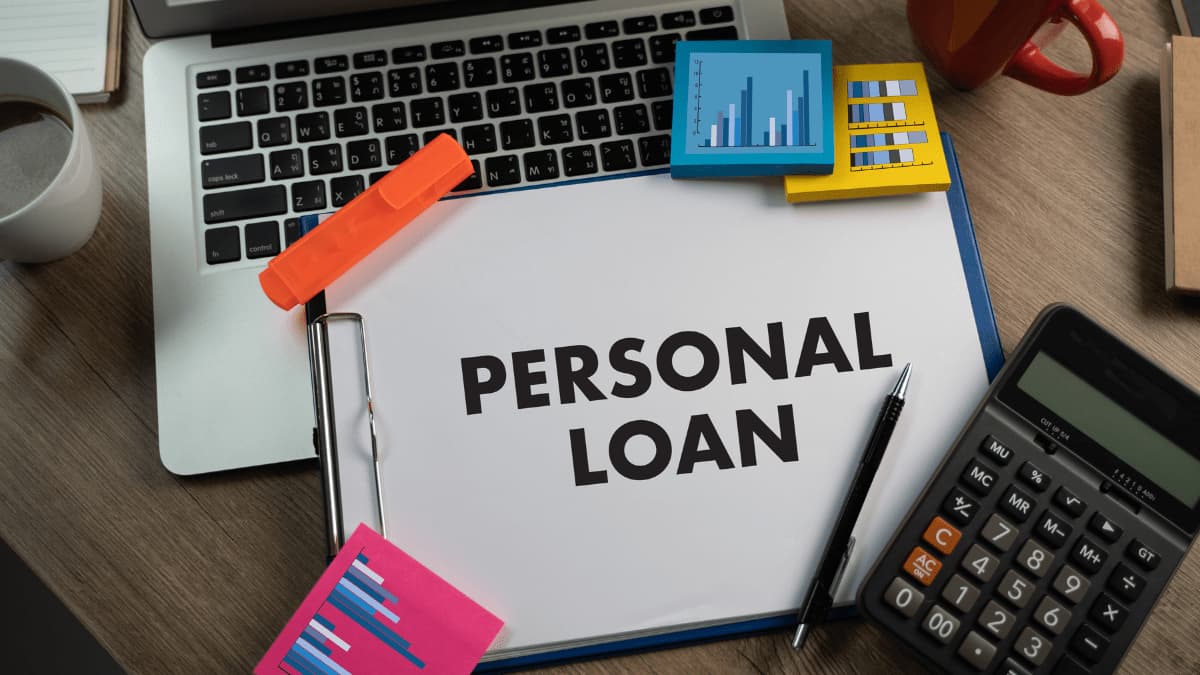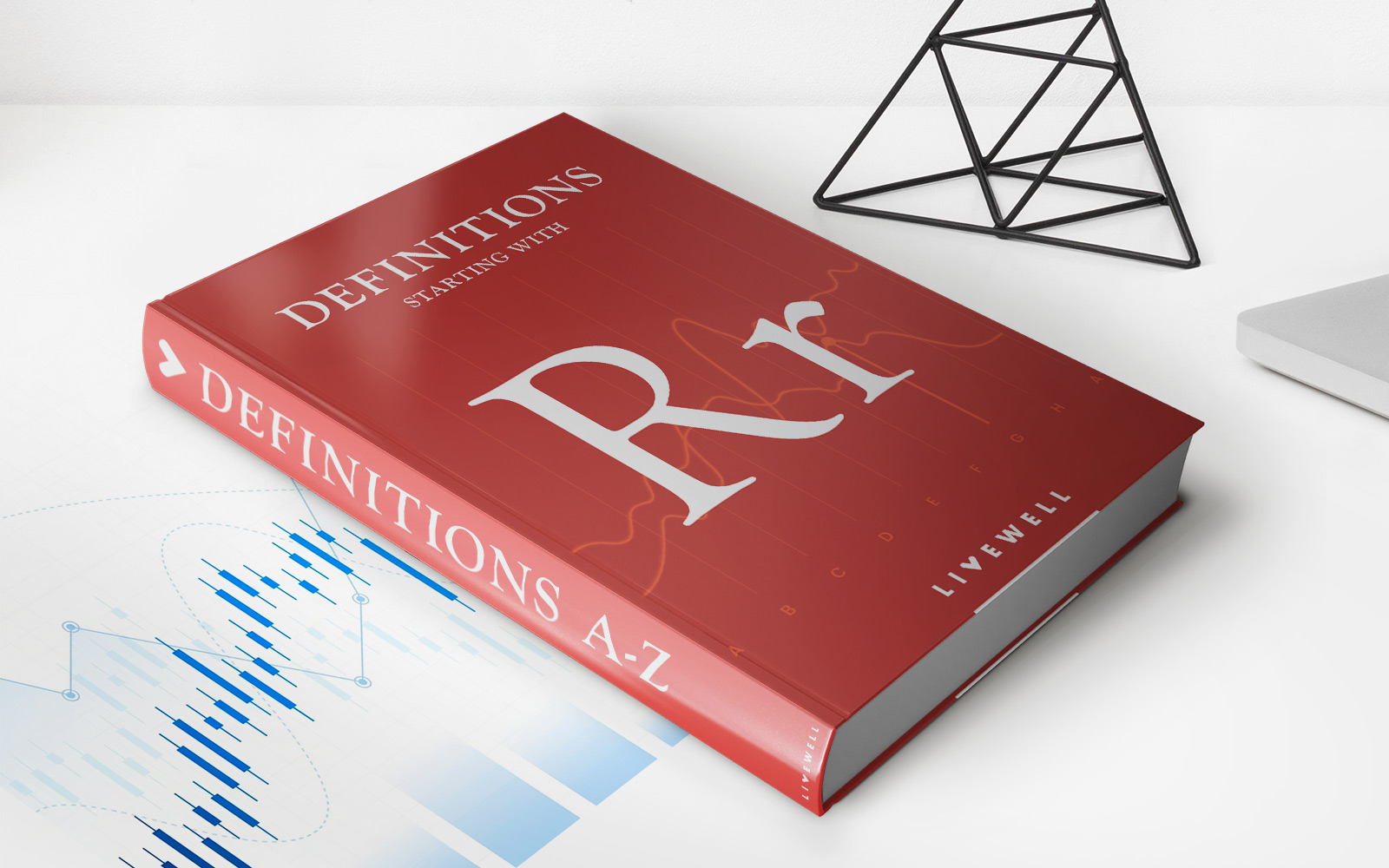

Finance
How To Get A 30,000 Personal Loan
Modified: February 21, 2024
Looking for financial assistance? Learn how to secure a $30,000 personal loan to fulfill your financial needs with our comprehensive guide on finance.
(Many of the links in this article redirect to a specific reviewed product. Your purchase of these products through affiliate links helps to generate commission for LiveWell, at no extra cost. Learn more)
Table of Contents
Introduction
Are you in need of a substantial amount of money to cover a major expense or consolidate your debt? A personal loan can be a viable solution, providing you with the funds you need to achieve your financial goals. If you require a loan of $30,000, you may be wondering how to go about securing it.
In this article, we will guide you through the step-by-step process of getting a $30,000 personal loan. We’ll cover everything from determining your loan needs to finding the right lender and completing the application process. By following these steps, you can increase your chances of securing a loan with favorable terms and conditions.
It’s important to note that personal loans are unsecured, meaning they do not require collateral. Instead, lenders evaluate your creditworthiness and income to determine if you qualify for the loan and what interest rate you will be offered. Consequently, having a good credit score and a stable income will greatly benefit your loan application.
Now, let’s delve into the step-by-step process of obtaining a $30,000 personal loan.
Step 1: Determine your loan needs
Before applying for a $30,000 personal loan, it’s essential to assess your financial situation and determine your specific loan needs. Take the time to evaluate how much money you truly require and how it will be used. This will help you in finding the right loan term and interest rate suitable for you.
Start by analyzing your financial goals and the purpose of the loan. Are you planning to consolidate high-interest debts? Do you need the funds for a home improvement project or a major purchase? By clearly identifying your priorities, you can tailor your loan search accordingly.
Consider your repayment capabilities as well. Take a close look at your monthly income and expenses to determine how much you can comfortably afford to repay each month. Be realistic about your budget to avoid taking on a loan that puts a strain on your finances.
Additionally, think about the loan term that suits your needs. A shorter term will result in higher monthly payments but lower overall interest costs. On the other hand, a longer term will lower your monthly payments but potentially increase your interest expenses over time. Consider your financial goals and current financial situation to choose the loan term that works best for you.
Ultimately, determining your loan needs involves careful consideration of your financial goals, repayment capabilities, and desired loan term. By understanding your specific requirements, you’ll be better equipped to find a $30,000 personal loan that aligns with your needs and helps you achieve your financial objectives.
Step 2: Check your credit score
When applying for a $30,000 personal loan, it’s crucial to have a clear understanding of your creditworthiness. Lenders assess your credit score to determine the level of risk in granting you a loan. A higher credit score generally translates to better loan terms and interest rates.
Start by obtaining a copy of your credit report from one of the major credit bureaus, such as Equifax, Experian, or TransUnion. You are entitled to a free copy of your credit report annually. Review the report carefully for any errors or discrepancies that could affect your credit score.
A good credit score is typically above 670, while an excellent score is above 740. If your credit score is below these thresholds, take steps to improve it before applying for a loan. This may include paying down outstanding debts, making all payments on time, and minimizing credit utilization.
In addition to your credit score, lenders also consider other factors such as your credit history, employment history, and debt-to-income ratio. Understanding these aspects of your financial profile will give you a better idea of how lenders may perceive your loan application.
It’s important to note that even if your credit score is less than ideal, you may still qualify for a $30,000 personal loan. Some lenders specialize in providing loans to individuals with lower credit scores, albeit with higher interest rates. However, improving your credit score before applying can significantly increase your chances of securing a loan with more favorable terms.
By checking your credit score and addressing any issues, you can better prepare yourself for the loan application process. This proactive approach puts you in a stronger position to negotiate terms and secure a $30,000 personal loan that suits your needs.
Step 3: Research lenders
Once you have a clear understanding of your loan needs and have checked your credit score, it’s time to research lenders that offer $30,000 personal loans. The goal is to find reputable lenders with favorable terms and competitive interest rates. Here are some key considerations for your research:
1. Traditional Banks: Start by exploring personal loan options offered by traditional banks, such as Wells Fargo, Chase, or Bank of America. These institutions generally have stringent requirements but may offer lower interest rates to borrowers with good credit scores.
2. Credit Unions: Consider joining a local credit union and exploring their personal loan options. Credit unions often offer competitive interest rates and flexible terms to their members.
3. Online Lenders: Online lending platforms like SoFi, LendingClub, and Prosper have gained popularity in recent years. These platforms typically offer a streamlined application process and may be more lenient in their credit score requirements.
4. Peer-to-Peer Lending: Peer-to-peer lending platforms, such as Peerform or Upstart, connect borrowers directly with individual investors. These platforms may offer competitive rates and more flexible lending criteria.
5. Alternative Lenders: Explore alternative lenders like Avant or OneMain Financial, who specialize in providing loans to individuals with subpar credit scores. They may be more willing to work with borrowers who have less-than-perfect credit histories.
When researching lenders, pay attention to factors such as their reputation, customer reviews, interest rates, loan terms, and any additional fees involved. Ensure that the lender is licensed and registered in your state to provide loans.
Once you have identified potential lenders, visit their websites or contact them directly to gather more information about their loan offerings. Compare interest rates, terms, and eligibility criteria to choose the lender that best suits your needs.
By conducting thorough research on lenders, you can make an informed decision and select a reputable lender with favorable terms for your $30,000 personal loan.
Step 4: Compare interest rates and terms
After researching potential lenders for your $30,000 personal loan, it’s crucial to compare the interest rates and terms they offer. This step will help you identify the most affordable and suitable loan option for your financial needs. Here’s how to go about it:
1. Interest Rates: The interest rate is the percentage you’ll pay on top of your loan amount. Compare the interest rates offered by different lenders to find the most competitive option. Keep in mind that a lower interest rate can save you a significant amount of money over the life of the loan.
2. Annual Percentage Rate (APR): In addition to the interest rate, consider the Annual Percentage Rate (APR), which includes any additional fees and charges associated with the loan. The APR provides a more comprehensive understanding of the total cost of borrowing.
3. Loan Terms: Examine the loan terms offered by each lender, including the repayment period, monthly payments, and any prepayment penalties. Determine if the loan terms align with your financial situation and repayment capabilities.
4. Repayment Flexibility: Assess if the lender offers any flexibility options, such as the ability to change your monthly payment due date or the option to make extra payments without penalties. These features can make it easier for you to manage your loan and potentially save on interest costs.
5. Customer Reviews: Read customer reviews and testimonials to gauge the lender’s reputation and customer service. Positive reviews can provide insights into other borrowers’ experiences and give you confidence in choosing the right lender.
Remember to consider both the interest rate and the overall loan terms when comparing lenders. A lower interest rate may seem attractive, but if the repayment period is shorter and the monthly payments are higher, it may not be the most suitable option for your financial situation.
Creating a spreadsheet or a comparison chart can be helpful in organizing the information and making an informed decision. Take your time to carefully analyze the different lenders’ offerings before choosing the one that best fits your needs.
By comparing interest rates and terms, you can ensure that you secure a $30,000 personal loan with favorable conditions that align with your financial goals and repayment capabilities.
Step 5: Gather necessary documentation
Before applying for a $30,000 personal loan, it’s important to gather all the necessary documentation. Lenders require certain documents to verify your identity, income, and financial stability. Having these documents ready will help streamline the application process. Here are some essential documents you may need:
1. Personal Identification: Provide a valid government-issued identification, such as a driver’s license, passport, or state ID card. This document confirms your identity and age.
2. Proof of Income: Prepare documents that demonstrate your income, such as recent pay stubs, W-2 forms, or tax returns for self-employed individuals. Lenders use this information to evaluate your ability to repay the loan.
3. Employment Verification: Include documents that verify your current employment status, such as an employment verification letter or recent bank statements showing consistent income deposits.
4. Bank Statements: Provide several months’ worth of bank statements to show your financial stability and ability to manage your finances. Lenders may request these statements to assess your income, expenses, and overall financial well-being.
5. Proof of Address: Submit documents that confirm your current residential address, such as utility bills, lease agreements, or a copy of your mortgage statement.
6. Existing Debts: Make a list of your existing debts, including credit cards, student loans, and mortgages. This information helps lenders assess your debt-to-income ratio and evaluate your overall financial situation.
7. Financial Assets: If you have any financial assets, such as savings accounts, investments, or real estate, provide relevant documents that prove their existence and value. This information can enhance your financial profile and increase your chances of securing the loan.
It’s important to remember that lenders may have specific requirements and additional documentation depending on their policies. Therefore, it’s advisable to contact the lender directly or check their website for a comprehensive list of the documents they require.
By gathering all the necessary documentation upfront, you can expedite the loan application process and demonstrate your financial stability to the lender. This will increase your chances of being approved for a $30,000 personal loan with favorable terms and conditions.
Step 6: Apply for the loan
After completing thorough research, comparing lenders, and gathering the necessary documentation, it’s time to apply for your $30,000 personal loan. The application process may vary slightly depending on the lender, but here are the general steps to follow:
1. Online Application: Many lenders offer online applications, allowing you to conveniently apply from the comfort of your own home. Visit the lender’s website and locate the loan application page. Fill out the required information accurately and completely.
2. Personal Information: Provide your personal details, such as your name, date of birth, and contact information. You will likely need to provide your social security number as well.
3. Loan Details: Specify the loan amount you are seeking, which in this case is $30,000. Indicate the purpose of the loan, such as debt consolidation or a major purchase.
4. Financial Information: Include information about your income, employment history, and any additional sources of income you may have. This information helps lenders evaluate your ability to repay the loan.
5. Submit Documentation: Upload or send the required documents to the lender. Make sure to follow their instructions regarding format and file size.
6. Review and Confirm: Carefully review all the information you provided before submitting the application. Ensure accuracy and completeness to avoid any delays or complications in the approval process.
7. Application Review: Once you submit your application, the lender will review it along with the supporting documentation. They may contact you for further verification or clarification if needed.
8. Approval Decision: After reviewing your application, the lender will make an approval decision. This process can take anywhere from a few hours to a few days, depending on the lender’s policies and workload.
9. Loan Terms Offer: If your application is approved, the lender will present you with the loan terms and conditions. Carefully review the interest rate, repayment period, monthly payments, and any fees associated with the loan.
10. Acceptance: If you agree to the loan terms, you can accept the offer and proceed with the loan process. Read and understand the loan agreement thoroughly before signing any contracts.
Remember to monitor your email and phone for any communication from the lender during the application process. Promptly respond to any requests for additional information or documentation to avoid delays.
By following these steps and accurately completing the loan application, you increase your chances of securing a $30,000 personal loan that meets your financial needs.
Step 7: Review and accept the loan offer
After going through the application process, you may receive loan offers from various lenders for your $30,000 personal loan. Now comes the crucial step of carefully reviewing and evaluating these offers to ensure they align with your needs and financial situation. Follow these steps to review and accept the loan offer:
1. Review the Terms: Carefully read and understand the terms and conditions of each loan offer. Pay close attention to the interest rate, repayment period, monthly payments, and any additional fees or charges associated with the loan. Compare these details across all offers you have received.
2. Consider the APR: Look beyond the interest rate and consider the Annual Percentage Rate (APR), which includes the interest rate and any additional fees. The APR provides a more accurate representation of the total cost of the loan.
3. Assess Repayment Flexibility: Evaluate the flexibility offered by each lender in terms of changing the monthly payment due date, making early or extra payments, or refinancing the loan in the future. These features can help you manage the loan more effectively and potentially save on interest costs.
4. Ask Questions: If you have any doubts or concerns about the loan offer, don’t hesitate to reach out to the lender and ask for clarification. It’s essential to have a clear understanding of the terms before accepting the offer.
5. Consider Customer Reviews: If available, read customer reviews or testimonials about the lender to learn about other borrowers’ experiences. Positive reviews indicate a reputable lender with good customer service.
6. Seek Professional Advice: If you’re uncertain about which loan offer to accept, consider consulting a financial advisor or loan expert who can provide guidance based on your specific financial situation and goals.
7. Make an Informed Decision: Take your time to weigh the pros and cons of each loan offer and consider how it aligns with your financial needs and goals. Choose the offer that offers the most favorable terms and conditions while ensuring affordability within your budget.
8. Accept the Loan Offer: Once you have made your decision, inform the lender of your acceptance. Follow the instructions provided by the lender to finalize the loan agreement, which may involve signing electronic documents or returning a signed physical contract.
Remember, accepting a loan offer is a commitment to repay the borrowed amount in accordance with the agreed-upon terms. Ensure that you fully understand the terms and are financially capable of meeting the loan obligations before accepting the offer.
By carefully reviewing and accepting the loan offer that suits your needs, you can proceed to the next step of the loan process with confidence, knowing you have chosen the best option for your $30,000 personal loan.
Step 8: Repay the loan on time
Once you have accepted the loan offer and received the funds for your $30,000 personal loan, it’s crucial to prioritize timely repayment. Consistently repaying the loan on time not only helps you maintain a good credit history but also ensures that you fulfill your financial obligations. Follow these steps to successfully repay your loan:
1. Create a Repayment Schedule: Review the loan agreement and determine the repayment schedule. Note the due dates and the amount required for each payment. Use a calendar or set reminders to stay organized and avoid missing any payments.
2. Set Up Automatic Payments: Consider setting up automatic payments with your bank or the loan provider. This ensures that your monthly payment is automatically deducted from your account on the due date, reducing the risk of late or missed payments.
3. Budget Appropriately: Adjust your budget to accommodate the monthly loan payments. Prioritize them along with your other financial obligations to ensure you have sufficient funds to cover the payments each month.
4. Minimize Extra Expenses: If possible, cut back on unnecessary expenses to free up additional funds to put towards your loan repayment. Consider reviewing your budget and identifying areas where you can save money.
5. Avoid Late Payments: Late payments not only incur additional fees and penalties but also negatively impact your credit score. Make it a priority to always make your loan payments on time to avoid these consequences.
6. Communicate with the Lender: If you encounter any financial difficulties or anticipate a problem making a payment, reach out to your lender as soon as possible. They may be able to offer temporary assistance or alternative repayment arrangements.
7. Pay More Than the Minimum: If your financial situation allows, consider making extra payments towards your personal loan. By paying more than the minimum required, you can reduce the overall interest costs and pay off the loan faster.
8. Track Your Progress: Monitor your loan balance and track your progress as you make payments. Seeing the balance decrease over time can act as motivation and help you stay focused on successfully repaying the loan.
9. Keep Records: Keep all relevant documentation, including payment receipts and statements, in an organized manner. This will be helpful for future reference and can be used as proof of payment if needed.
10. Plan for the Future: As you approach the end of your loan term, start planning for the future. Consider how to allocate the extra funds that were previously allocated to loan repayment, such as saving for emergencies or investing in your financial goals.
By diligently repaying your $30,000 personal loan on time, you not only honor your financial commitments but also establish a positive credit history. This can benefit you in future loan applications and financial endeavors.
Conclusion
Securing a $30,000 personal loan can provide you with the financial means to accomplish your goals and address important expenses. By following the step-by-step process outlined in this article, you can navigate the loan application process with confidence and increase your chances of obtaining favorable terms and conditions.
Remember to determine your loan needs, check your credit score, research lenders, compare interest rates and terms, gather the necessary documentation, apply for the loan, review and accept the loan offer, and finally, repay the loan on time.
Throughout the process, it is important to be proactive, thorough in your research, and communicate effectively with lenders. By understanding your financial situation, identifying the most suitable loan offer, and budgeting responsibly, you can successfully manage and fulfill your loan obligations.
Keep in mind that responsible borrowing and prompt repayment are essential for maintaining a good credit score and financial stability. By doing so, you will be well-positioned to tackle future financial goals and secure loans with better terms in the long run.
Lastly, always remember to seek professional advice if needed and make informed decisions based on your personal financial circumstances and goals.
With thorough preparation, careful consideration, and timely repayment, you can navigate the personal loan process and secure a $30,000 loan that assists you in achieving your financial objectives.














